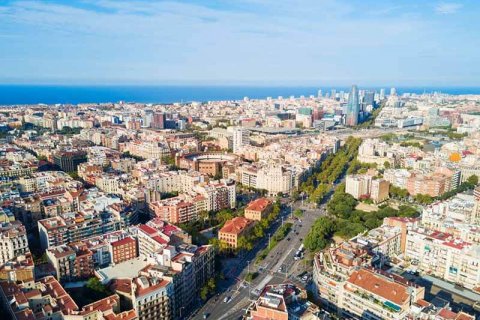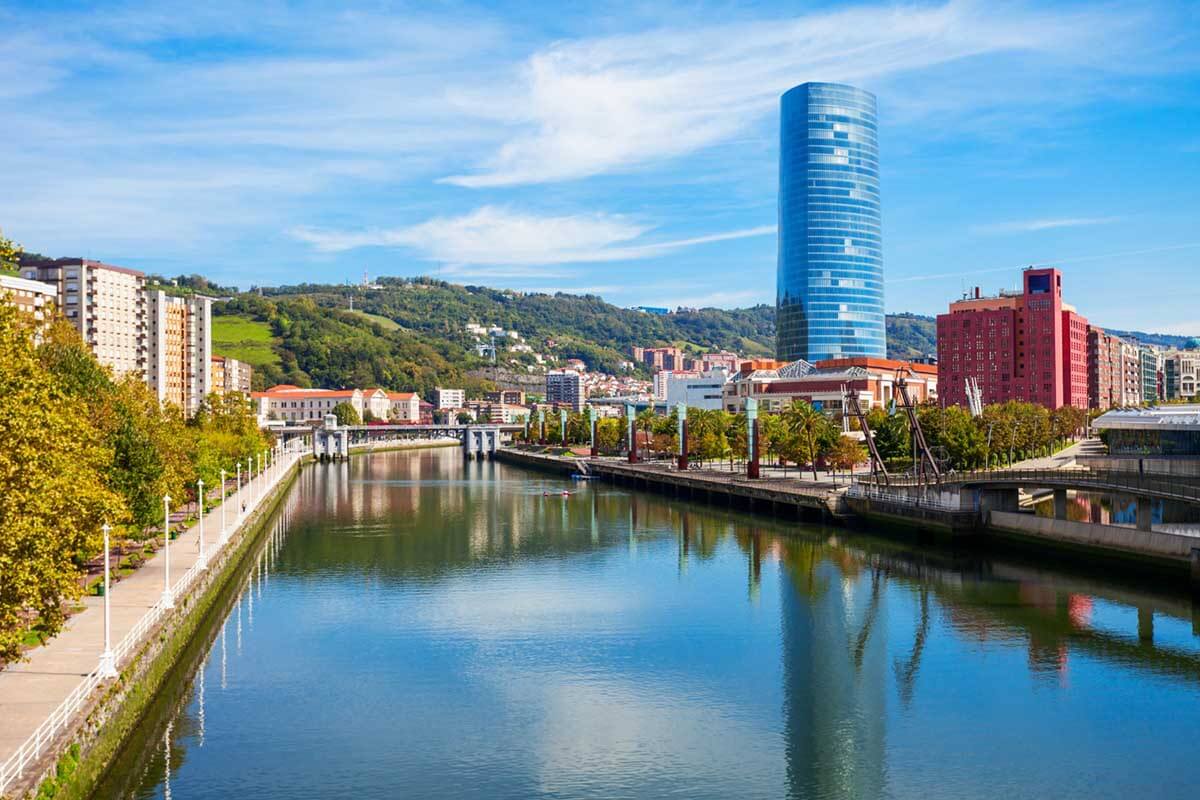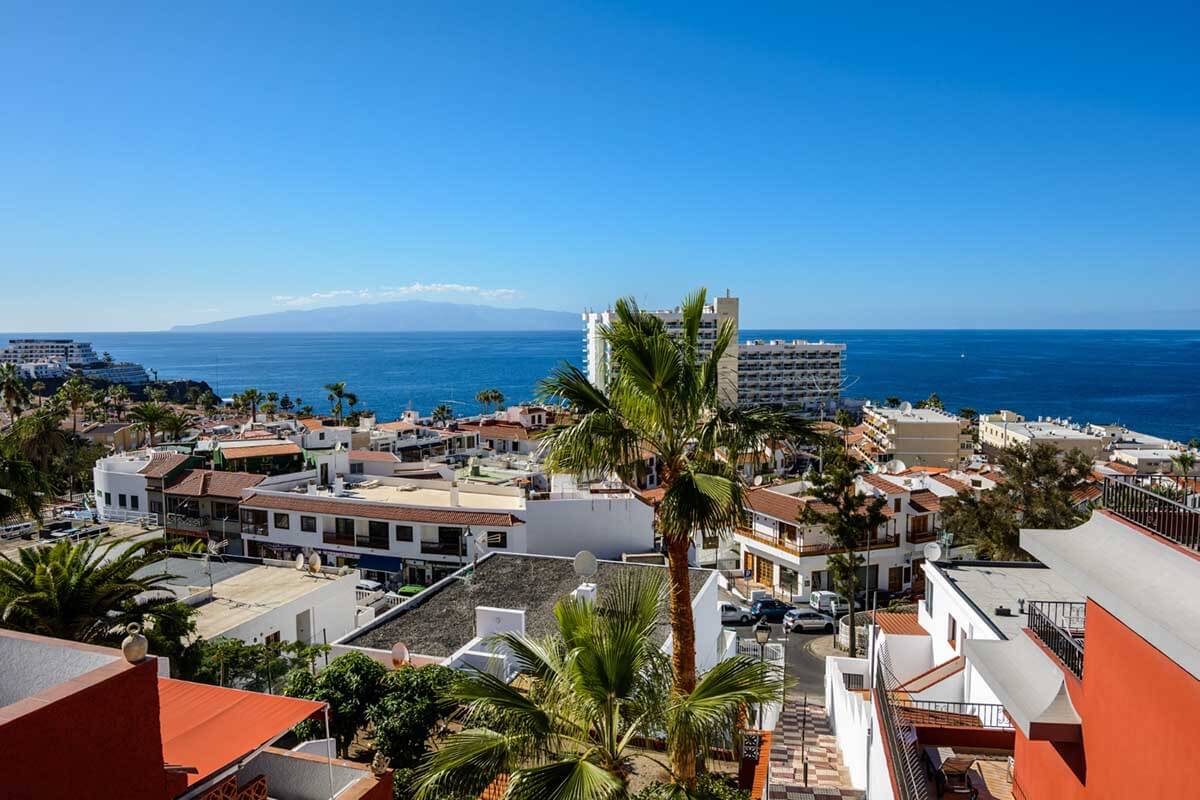
Spain has become one of the best countries for emigrants due to its climate, rich culture, high-quality education system, and friendly people. It is an adventure that many people want to experience even if just temporarily.
The decision to move to Spain is a bold step. Therefore, in this article, you will find useful and relevant information about Spain.
Content:
- 5 reasons to live in Spain
- Cost of living in Spain
- What do Spaniards spend the most money on?
- How have the expenses of Spaniards changed?
- Which families spend the most?
- Which autonomous communities spend the most money?
- Salaries in Spain
- Choosing a place to stay in Spain
- Real estate in Spain: inhabitants, their numbers, and the most populated places
- Spain-Real.Estate will help you buy a property in Spain
5 reasons to live in Spain
1. Unique climate
If there is one thing Spain can boast, it is that it has the best climate in Europe. While the temperature drops by several degrees in other countries, Spain has a temperate climate.
For example, on the Mediterranean coast in winter, the air temperature reaches 18ºC. So, if you want to avoid the cold weather, living in Spain is the perfect choice for you.
2. Excellent study opportunities
Spain's education system has been transformed to become one of the best in Europe. It offers both local and foreign students the opportunity to study in the most modern educational institutions.
3. A wide range of historical monuments
Undoubtedly, living in Spain is an opportunity to enjoy the sights the country has to offer. Major cities will amaze you with their historical buildings and architectural masterpieces.
Living in Spain, you will find modern, Gothic, colonial, and even medieval architecture depending on the area. In addition to the cultural heritage, the streets of this Pyrenean country are full of busy city life. And if you hit the road, you will find parks, nature reserves, and picturesque places such as Toledo, Granada, Girona, or Cadaques that will take your breath away.
4. Tons of entertainment to explore culture and history
Since its foundation, Spain has been influenced from all over the world. This has made the local culture, traditions, and customs incredibly diverse.
Each region or community – this is how Spain is divided – has an interesting and rich history.
For example, in addition to Castilian or Spanish, there are other official languages in the country such as Catalan or Basque. Spain is a place that everyone should visit at least once in their life.
5. Living in Spain is cheaper than in other European countries
Living in Spain is not cheap but the purchasing power here is higher than in other European countries. In addition, the costs of university tuition, meals, and rental housing with countries compared to the Netherlands or France are much cheaper.
Living in Spain means enjoying a high quality of life.
.jpg)
Cost of living in Spain
Each family has a unique way of life but Spaniards tend to spend more money on some things than others.
Interestingly, Spanish households spend more than 29,000 euro a year.
According to the latest study, average expenses amount to 29,871 euro per family which is 2.3% more than in 2017. However, expenses per person increased by 2.5% or 12,019 euro.
What do Spaniards spend the most money on?
Spaniards spend an average of 9,181 euro a year on housing, water, electricity, gas, and other expenses which is 30.7% of their expenses. Below are the main annual expenses of Spaniards:
-
Housing, water, electricity, gas, and other fuels: 30.7% – 9,181 euro.
Undoubtedly, everyday life and related services, especially electricity are the most expensive services.
-
Food and soft drinks: 14.1% – 4,223 euro.
The products that Spaniards spend the most on are meat (3.2% of the total), bread and cereals (2%), fish and seafood (1.7%), milk, cheese, and eggs (1.6%).
-
Transport: 12.7% – 3,790 euro.
This figure includes both the costs of buying and using a private car as well as the costs of public transport.
-
Restaurants and hotels: 9.9% – 2,948 euro.
Spaniards spend a lot on food and holidays so it is important to save on expenses that are not necessary.
-
Other goods and services: 7.7% – 2,298 euro.
This figure includes all those expenses that are not in the other 11 groups. For example, electronic goods, jewelry, hygiene products, etc.
- Culture and leisure: 5.5% – 1,643 euro.
- Clothing and footwear: 4.9% – 1,463 euro.
- Furniture and household items: 4.6% – 1,372 euro.
- Health: 3.4% - 1,010 euro.
- Communications: 3.2% – 964 euro.
- Alcoholic beverages and tobacco: 1.7% – 519 euro.
- Education: 1.5% – 461 euro.
How have Spaniards expenses changed?
Expenses in 2019 differed from previous years. On the one hand, Spaniards spent more on education (costs increased by 11.2%), communications (+3.7%), and transport (+3.4%).
On the other hand, they bought fewer clothes and shoes (-3.4%), alcohol and tobacco (-3.2%) and spent less on restaurants and housing (-1.8%).
Which families spend the most?
Households with breadwinners who contribute the most to the family economy spend the most money. In particular, they spend about 33,717 euro a year.
They are followed by households without breadwinners, pensioners or pre-retirees whose expenses are below the average level of 27,165 euro, as well as households with inactive people who are not looking for work like students at 19,435 euro per year.
Those with unemployed breadwinners spend the least with an average of only 17,508 euro per year.

Which autonomous communities spend the most money?
In the autonomous cities of Ceuta and Melilla, residents spend the least money per person – 8,702 and 9,350 euro per year, respectively. They are followed by the Canary Islands (9,405 euro), Extremadura (9,521 euro), and Castilla-La Mancha (10,031 euro).
On the other hand, the Basque Country (14,406 euro), Navarre (14,039 euro), Madrid (14,021 euro), and Catalonia (13,270 euro) have the highest expenses.
You need to have a budget to travel to Spain. You must include the cost of plane tickets, other necessities, and all the expenses for your stay.
You will need about 900 to 1200 euro per month depending on the expenses you have during the month. Below are some approximate costs:
- Renting a room in a shared apartment: 450€;
- Groceries: €250;
- Public transport: €50;
- Mobile phone + Internet: 30€;
- Monthly health insurance: €60.
- Other expenses: 260€.
Thus, the estimated cost of living in Spain is €1,100. In addition, you will have to consider the costs of school classes, gym, etc.
Salaries in Spain
If you are interested in living and working in Spain, you should know about Salario Mínimo Interprofessional (SMI). This is the basic salary established by Spanish law which all employees must receive monthly regardless of contractual terms.
This year, the SMI is about 1,050 euro. Therefore, if all your documents are in order and you have the legal right to work, you should make sure that your salary is not lower than this figure.
If you are a professional, you should look for a job in your region. If you can only find an unskilled job like being a waiter, you will be able to live in Spain without financial problems.
Choosing a place to stay in Spain
In the current real estate market, there are different types of housing with various features.
Having a choice allows you to increase your chances to get exactly what you are looking for.
To provide you with everything you need to choose the perfect home, below is a list of the main types of housing available in Spain.
Single-family homes
These are buildings designed for single families. They usually have spacious interiors and open spaces such as gardens or swimming pools. Among the different types of single-family homes, you can find the following:
House
This is the most popular and common type of detached house in Spain. It has a large central house with bedrooms, bathrooms, a living room, and other rooms on a large plot of land. Usually, there is a significant distance between the houses which helps a family feel secluded and independent.
Villa
This includes large residential buildings with one or more floors in a residential complex next to similar buildings. The villas are separated from each other by walls or other structures. They usually have an internal staircase between floors and rooms. In other areas, they are known as townhouses.
Apartment buildings
This is a building divided into several rooms for families. There may be a system of joint ownership in which each tenant pays the total costs.
Flat
This is the most common option in the real estate market due to its high demand. According to Statistas, about 70% of Spaniards live in flats. They can have various numbers of bedrooms, bathrooms, kitchens, and living rooms. There may be terraces, multifunctional spaces, and other amenities.
Studio
Studios are similar to apartments but much smaller. Their internal spaces include a kitchen, bathroom, and living room in which you can put a bed to turn into a bedroom. This is a popular alternative for university students as they are very economical compared to renting or buying a home.
Apartment
The apartment has a bedroom, living room, bathroom, and kitchen. This is an ideal option for a young person or couple as prices are more affordable.
Penthouse
This is the equivalent of the Anglo-Saxon Penthouse - the term for apartments on the top floor of a building. There are apartments with different numbers of bedrooms and a large terrace. They are popular with buyers and depending on the configuration of their interior, may have 1 or more floors.
If you are thinking about living in Spain, considering the right type of housing is important. Let's focus on the prices to rent a room and an apartment.
A single room costs from 300 to 500 euro per month but utilities (electricity, water, gas, and telephone) are not included in this figure. An apartment with an area of 60 to 90 square meters can cost from 600 to 800 euro per month.
These prices depend on 2 things:
- The city where you plan to rent an apartment. Living in Barcelona is not the same as Valencia.
- If you live in the city center, you will pay much more for your home than the surrounding areas.
Real estate in Spain: inhabitants, their numbers, and the most populated places
According to the latest data, there are about 46,000,000 inhabitants in Spain.
According to information collected by the Ministry of Public Works and the Cumulative mortgage system, there is an average of 2.44 people per household. There are more than 19 million housing units in the country which is 74.6%. Murcia (2.82) has the highest population density followed by Almeria (2.62) and Cadiz (2.59).
This shows housing growth in various autonomous communities in Spain. Compared to 2016, it has increased by 0.23%. The figures will be more significant if we compare 2021 with previous years. There are more than 26,000,000 homes in Spain.
Of this number, about 19,000,000 are permanent homes. Madrid, Barcelona, and Valencia stand out as the provinces with many households (2,600,000, 2,300,000, and over 1,000,000, respectively). The largest number of people live here. Segovia, Teruel, and Soria are cities with the smallest populations and fewer households.
Moreover, there are"second or country homes". These are buildings that people use during holidays, national holidays, long weekends, etc. Castilla y León is a region with many second homes followed by Castilla-La Mancha.
The average number of people living in 1 house is different depending on the location.
Some places exceed the average of 2.44 people.
- Murcia has an average of 2.82 people for ordinary housing;
- Almeria – 2.62;
- Cadiz – 2.59;
- Seville – 2.58;
- Huelva – 2.57;
- Malaga - 2.45;
- Balearic Islands - 2.47;
- Alicante – 2.49;
On the other hand, some cities do not exceed this average figure by INE.
- Asturias has approximately 2.16 people living in the first or main place of residence;
- Zamora and Huesca - 2.22.
- León - 2.23.
- Ourense - 2.25.
Provinces like Madrid, Barcelona, and Valencia should be in the first group but the population density per housing is below average (2.42, 2.37, and 2.38, respectively).

Spain-Real.Estate will help you buy a property in Spain
We work only with reliable developers in the Spanish market.
The Spain-Real.Estate website has different types of Spanish housing with detailed information, plans, and photos. Contact us to become the owner of a new home on favorable terms! Make your dream come true today!
